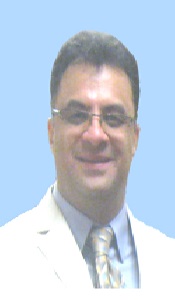Program Information
Prediction of Survival in Glioblastoma Patients: Using An Adaptive Neuro-Fuzzy Interface System and DCE-MRI Nested Model SelectionTechnique
A NV Dehkordi1 , A Kamali-Asl1 , N Wen2 , T Mikkelson2 , I J Chetty2 , H Bagher-Ebadian2*, (1) Shahid Beheshti University, Tehran, Tehran,(2) Henry Ford Health System, Detroit, MI
Presentations
MO-RAM-GePD-J(A)-1 (Monday, July 31, 2017) 9:30 AM - 10:00 AM Room: Joint Imaging-Therapy ePoster Lounge - A
Purpose: This pilot study investigates the feasibility of building a survival predictor for patients with glioblastoma multiforme (GBM) using an Adaptive Neuro-Fuzzy Inference System (ANFIS). The ANFIS was trained using patient age and dynamic-contrast-enhanced (DCE)-MRI pharmacokinetic (PK) parameters of tumors.
Methods: DCE-MRI studies of 33 treatment naïve GBM patients were analyzed. Using a Model-Selection (MS) technique applied on Tofts-model, three physiologically-nested models with the following PK parameters were constructed for GBM tumors: Model-1 with one parameter (vp: plasma volume), Model-2 with two parameters (vp and Ktrans: forward transfer constant), and Model-3 with three parameters (vp and Ktrans and kep: backward transfer constant). Three survival classes were determined based on the distribution of the patient survival time as follows: Class-1: Survival ≤ 6-months; Class-2: 6-months
Results: Amongst all the 7 PK parameters, Ktrans of Model-2, kep and ve (Ktrans/kep) of Model-3, and patient age, provided the highest classification performance for training the ANFIS. The generalization error of the trained-ANFIS was 15.2% with CCF of 81.8%, 90.1%, and 81.8% for survival classes of 1, 2, and 3 respectively. The sensitivity, specificity and Type-I error of the predictor were 81.8%, 95%, and 5% for class 1, 90.1%, 86.4%, and 13.6% for class 2 and 81.8%, 95%, and 5%, for class 3.
Conclusion: This pilot study confirms the feasibility of constructing an ANFIS as a survival-predictor using patient age and permeability information processed by the MS technique, for untreated GBM patients.
Funding Support, Disclosures, and Conflict of Interest: This research was supported in part by the following grants: A grant from Varian Medical Systems (Palo Alto, CA), Nathanson Rands & CRAG Developmental grant J80013, Dykastra Steele Family Foundation F60570, and a Research Scholar Grant, RSG-15-137-01 - CCE from the American Cancer Society.
Contact Email:
